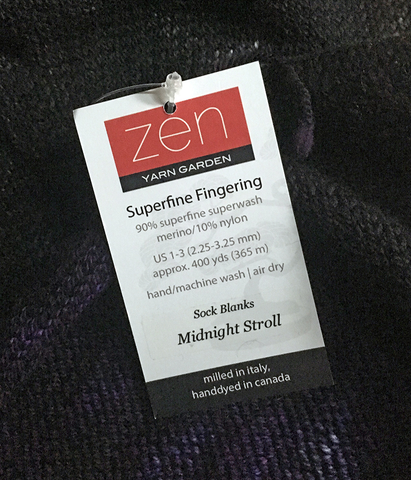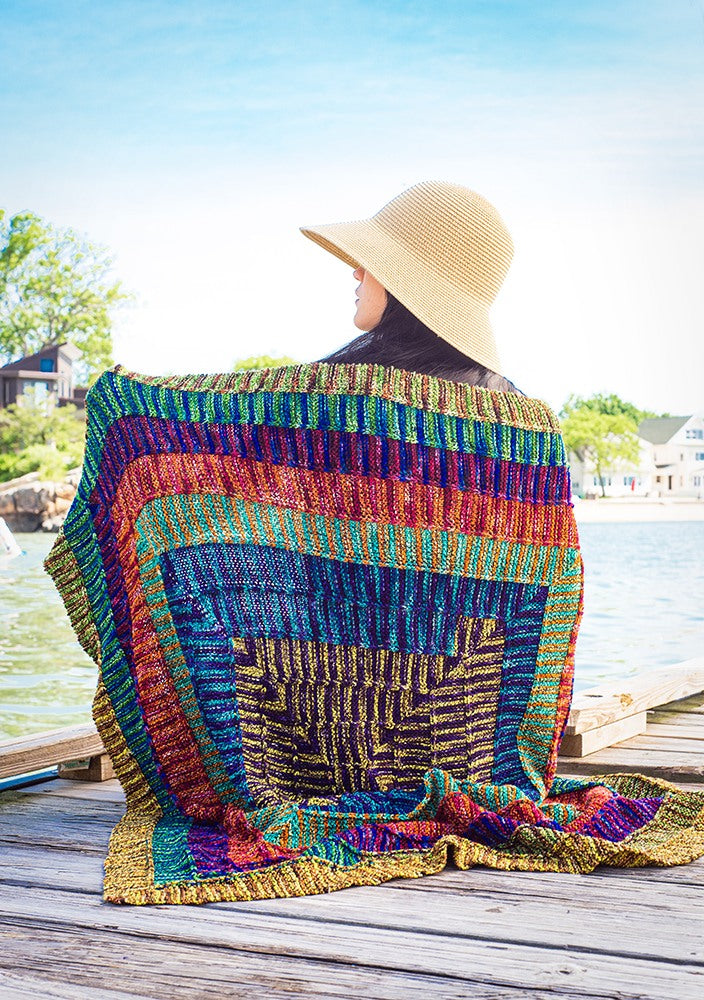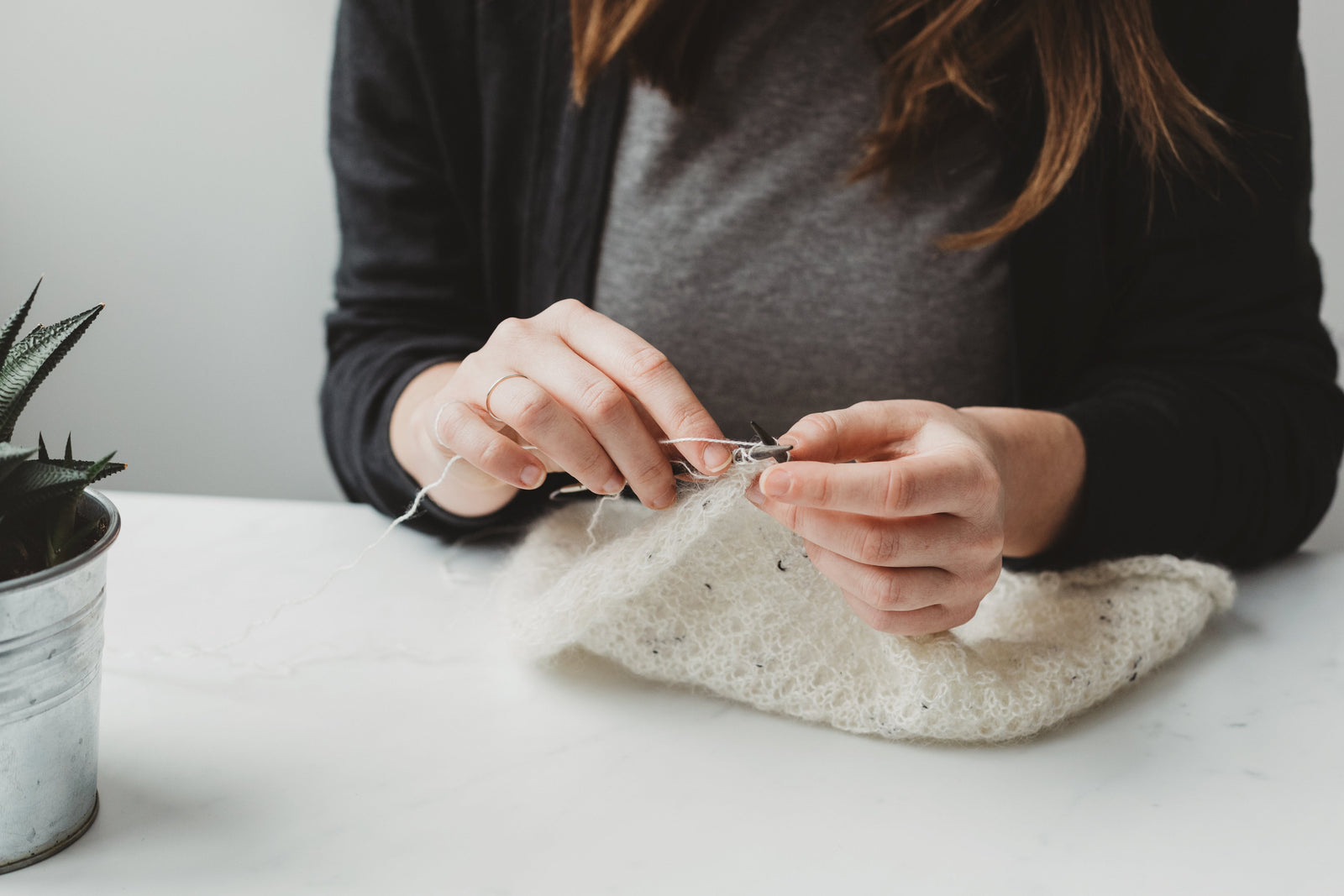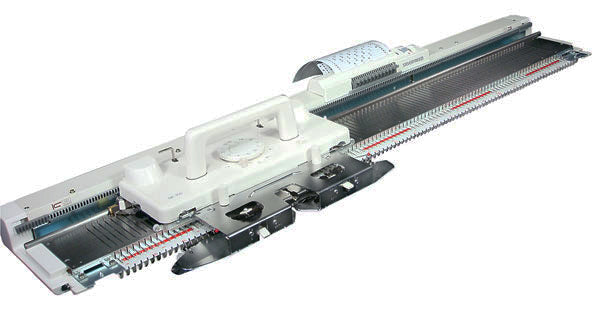Your Cart is Empty
Swatching: that one little word that every knitter dreads. In this post, we talk about why swatching is necessary and share our best tips for swatching so that you can put it into practice for your next project.
The Why of Swatching
Think of swatching like your first date with a yarn. Will you like it? Will it behave nicely? Will it make you swoon with delight? Are you, your yarn and your pattern a good match? Let’s find out.
Swatching is the process of testing the way in which you knit a stitch pattern, a yarn and a specific needle size. This allows you to measure gauge - how many stitches and rows per inch you get with that pattern and yarn on a specific needle size. Generally speaking, the smaller the needle, the more stitches per inch you’ll get, and the larger the needle, the fewer stitches per inch you’ll get.
Swatching tells you a few important things. Your gauge will let you estimate how big your project will be after you have knit it. This is especially important if you’re working on projects that are more fitted, like garments, to ensure that after you spend those long painstaking hours knitting or crocheting you don’t end up with a garment that’s too small or too large.
Swatching also tells you what kind of fabric you’re going to get when using a set pattern, yarn and needles. If you’re knitting a drapey shawl, you don’t want to end up with a fabric that is stiff and unwieldy. While the content of your fiber can contribute to this, you also want to be sure that at the specified gauge you’re getting a fabric that you like and is comfortable to you.
Finally, swatching helps you determine how to proceed and gives you an indication if you have enough yarn to complete your project. For instance, you may decide that a given gauge doesn’t create a fabric that you like. Perhaps it’s too airy and you’d rather knit it a little more densely (in this case you would go down a needle size). Or perhaps your fabric is too stiff and you’d rather add a little more give to your stitches (in this case you would go up a needle size). You may decide the yarn isn’t the right fit for the pattern. Or you may decide to proceed and make adaptations as you go (i.e. knit a small size of sweater at a larger gauge, knit a larger size of sweater at a smaller gauge) to create a garment that is just right for you. But if you choose to deviate from the pattern, you may need more or less yarn than the pattern calls for.
So really, swatching is the key! After you have your first date swatch, you can decide if it’s a match you’d like to pursue or if you’re ready to find another fish (pattern?) in the sea!
Swatching in Action
To illustrate our point, we’ve knit some swatches using the same yarn, the same pattern, and different needles to create a variety of swatches so you can see the difference. We used a sock blank, which is made out of our delightfully squishy and soft Superfine Fingering base (90% Merino/10% Nylon) and has the same length as our skeins, 400 yards/366 meters. As you can see, the recommended needle size for the sock blank (presuming you’re going to knit socks!) is US 1-3 (2.25 mm-3.25 mm) needles. All of our swatches are 40 stitches wide, and 28 rows tall. 
We started on a US 2 (2.25 mm) needle. You can see that when we knit on small needles, we get more stitches per inch and create a very dense fabric. For socks, we want our fabric to be sturdy, so this is a great idea. 
If we go up a few needle sizes (US #4) we get a more open gauge and a more drapey fabric. This might be ideal if we’re knitting a sweater or other garment where we want more give in the fabric. 
If we go up a few more needle sizes (US #6) we get fewer stitches per inch, which creates a fabric with lots more space, where you can see the room between stitches. You’ll often find shawls and other accessories knit at larger gauges, either to display lace or other pattern attributes, or to make a single skein stretch to make a larger project. 
All of the above have been knit with the same fingering weight yarn but produce very different gauges! 
We hope this post inspires you to spend a little time swatching before tackling those larger projects. If you have further questions or would like to share your projects with us, please follow us at @zenyarngarden, join our Facebook Group or tag your photos with #zenyarngarden.
Like this post? Pin it! 



